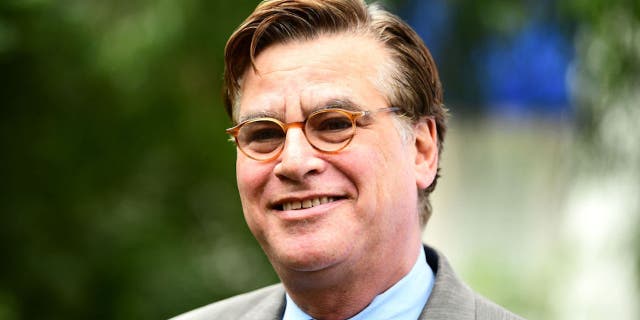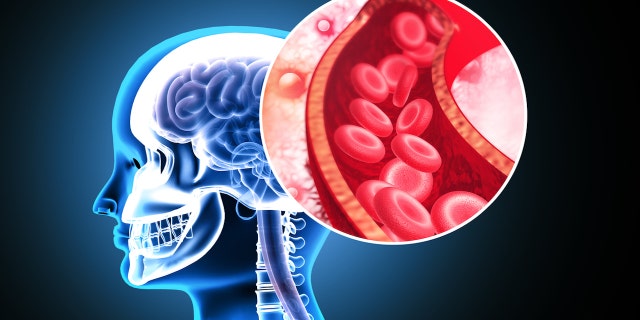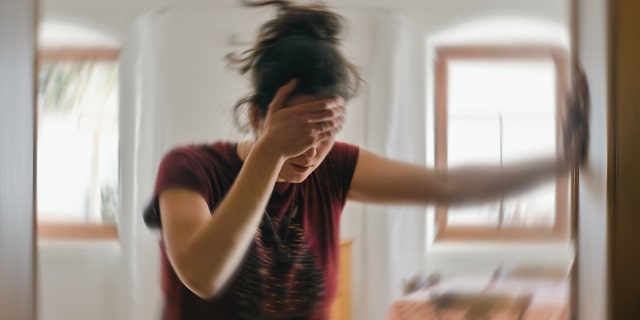
Screenwriter Aaron Sorkin recently spoke about his stroke recovery in the hope that it will inspire people to stop smoking.
During an interview with The New York Times to discuss his latest project — a Broadway musical revival of “Camelot” based on a book he rewrote — Sorkin mentioned that it’s now harder for him to write by hand.
Later, he shared more details about his health scare.
AARON SORKIN SUFFERED MASSIVE STROKE IN NOVEMBER: I’M ‘SUPPOSED TO BE DEAD’
“We focus on how important it is to act when folks experience symptoms of stroke,” Dr. Christina Wilson, neurologist and chief of the vascular division at the University of Florida Health in Gainesville, Florida, told Fox News Digital.
“However, we should also make sure people are aware that the long-term effects of smoking can lead to more than heart attacks,” said Wilson. “Smoking doubles your risk of stroke, and even passive exposure to smoke in your environment increases the likelihood you will have a stroke.”

Screenwriter Aaron Sorkin recently got candid about his stroke recovery in the hope that it will inspire smokers to quit the habit. He knew something was wrong when he experienced his first symptoms, he said. (Getty Images)
Sorkin has shared that he was a longtime smoker before experiencing his stroke.
What is a stroke?
A stroke, or brain attack, occurs when an artery that supplies blood to the brain either gets blocked or ruptures, according to the Centers for Disease Control and Prevention (CDC).
When a blood clot blocks an artery within the brain, it leads to an ischemic stroke.
A hemorrhagic stroke occurs when an artery within the brain bursts, per the CDC.
The brain is essential to all the body’s core functions, including movement, emotion, breathing and digestion. To function correctly, it needs oxygen-rich blood, which is delivered through the arteries.
Sorkin was crashing into walls as he walked into the kitchen. He knew something was wrong.
“If something happens to block the flow of blood, brain cells start to die within minutes because they can’t get oxygen,” the CDC noted.
“This causes a stroke.”
Stroke symptoms can be missed easily
Two months before rehearsals for “Camelot” last November, Sorkin woke up in the middle of the night only to start crashing into walls as he walked into the kitchen.
IN FIRST-OF-ITS-KIND EXPIREMENT, STROKE SURVIVORS ARE ABLE TO MOVE THEIR HANDS AGAIN WITH SPINAL CORD ZAPS
The 61-year-old initially shrugged off the symptom — but he knew something was wrong the next morning when he kept spilling his orange juice on the way to his home office.

Aaron Sorkin was diagnosed with an acute stroke in November 2022 — and said his doctor told him, “You’re supposed to be dead.” (REUTERS)
Sorkin called his doctor, who instructed him to get examined right away.
It turned out his blood pressure was so high that his doctor told him, “You’re supposed to be dead.”
He was later diagnosed with an acute stroke.
Recognize stroke symptoms ‘F.A.S.T.’
Experts say it’s critical to recognize stroke symptoms and take action immediately.
“Time lost is brain lost,” the CDC states on its website. “Every minute counts.”

A stroke, or brain attack, occurs when an artery that supplies blood to the brain either gets blocked or ruptures. Aaron Sorkin suffered an acute stroke, he shared recently. (iStock)
The American Stroke Association, a division of the American Heart Association, encourages people to remember the acronym “F.A.S.T” to recognize stroke symptoms.
Smoking doubles your risk of stroke.
F – Facial drooping: Does the patient have an asymmetrical smile or does one side of the face feel numb?
A – Arm weakness: Does one arm suddenly feel weaker than the other?
S – Speech difficulty (slurring)
T – Time to call 911
Someone who is experiencing stroke symptoms should call 911 right away for help.
Sorkin’s recovery
For a month after his stroke, Sorkin was slurring his speech, had difficulty typing and was not able to sign his name, he revealed.
He was worried that he would never write again.

The American Stroke Association, a division of the American Heart Association, encourages people to remember the acronym “F.A.S.T” to recognize stroke symptoms. (iStock)
But most of these symptoms have now resolved, he said, except for a continued lack of ability to taste food.
Sorkin emphasized in The Times interview that he’s “fine” now and is able to work.
Smoking a risk factor for stroke
One of the biggest changes the Academy Award winner made in his life was to quit smoking.
BE WELL: QUIT SMOKING (OR ENCOURAGE SOMEONE ELSE TO KICK THE HABIT)
Sorkin used to smoke about two packs a day since high school — and he said the habit was intertwined with his writing.
“Quitting tobacco is one of the most important things you can do to protect your health.”
“Quitting tobacco can be hard, but is one of the most important things you can do to protect your health,” Dr. Wilson said.
Even secondhand smoke raises the risk of stroke by 20% to 30%, according to the CDC.
CLICK HERE TO SIGN UP FOR OUR HEALTH NEWSLETTER
In addition to quitting smoking, Sorkin also started to eat a more nutritious diet — and began working out daily.
CLICK HERE TO GET THE FOX NEWS APP
“If it’ll get one person to stop smoking, then it’ll be helpful,” Sorkin told The New York Times.

 Latest Breaking News Online News Portal
Latest Breaking News Online News Portal




